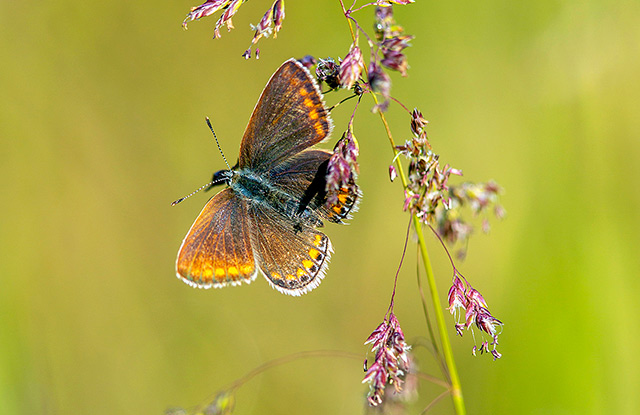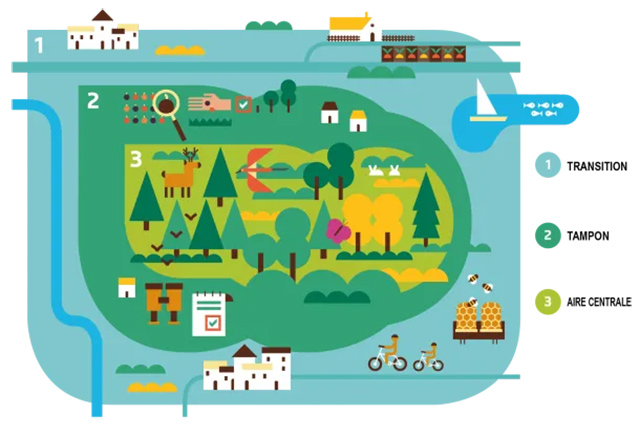November 3rd marks UNESCO’s World Day for Biosphere Reserves, a special occasion to celebrate global efforts to preserve biodiversity while promoting sustainable development.
By joining this prestigious network on October 28, 2020, the Minett UNESCO Biosphere is proud to represent Luxembourg at this level. Located in the south of the country, this region, once defined by industrial open cast extraction of iron ore, has transformed into a space where nature, culture, and history intertwine. The Minett UNESCO Biosphere illustrates how post-industrial landscapes can become models of harmony between humans and nature.
 |
 |
 |
© Marc Weis
The “Man and the Biosphere” programme
The “Man and the Biosphere” (MAB) programme was launched by UNESCO in 1971 in response to growing concerns about habitat destruction, climate change, and biodiversity loss. This visionary project aimed to explore balanced solutions between ecosystem conservation and the development needs of human communities. Since its inception, the MAB network has expanded significantly, now comprising 784 biosphere reserves in 142 countries. These sites demonstrate the ability to integrate ecological richness with the economic and social aspirations of local populations.
The fundamental principles of the MAB Programme
At the heart of the MAB programme lies a unique philosophy: to turn protected areas into living laboratories that harmoniously integrate:
- Ecological conservation, by maintaining biodiversity and protecting natural ecosystems.
- Sustainable socio-economic development, by supporting human activities that respect the environment and benefit local communities.
- Cultural education and awareness, to foster environmental consciousness and collective engagement.
These principles are based on the idea that nature conservation cannot be achieved without considering human realities, whether through resource management or community involvement.
The unique zoning system of Biosphere Reserves
The major innovation of biosphere reserves lies in their organization into three complementary zones:
- The Core Area: The ecological heart of the reserve, it is strictly protected to preserve natural habitats and prevent human disturbance. This is where biodiversity is richest and conservation takes top priority.
- The Buffer Zone: Surrounding the core area, it acts as an interface where sustainable human activities (scientific research, environmental education, eco-tourism) coexist with conservation.
- The Transition Area: The largest and most open area for sustainable human use. It promotes local development through green initiatives such as organic farming, crafts, and renewable energy.
© UNESCO / delhambre
This model ensures a progressive balance between rigorous nature protection and the integration of populations in local management.
The EuroMAB-Network: A laboratory for ideas and cooperation
Among the most dynamic initiatives of the MAB programme is the EuroMAB sub-network, which brings together biosphere reserves from 53 countries in Europe and North America, including Luxembourg. Created to strengthen ties between these regions, it fosters a spirit of collaboration and mutual learning. EuroMAB facilitates the exchange of best practices, the organization of transnational projects, and the search for innovative solutions to common challenges: climate change, resource management, environmental education, and scientific research.
World Day for Biosphere Reserves is a reminder of the crucial importance of preserving our ecosystems and promoting a sustainable coexistence between humans and nature. The Minett UNESCO Biosphere embodies this vision, positioning itself as an inspiring example for other regions. By relying on solid principles and international cooperation, biosphere reserves play a key role in building a future that respects our planet and future generations.




